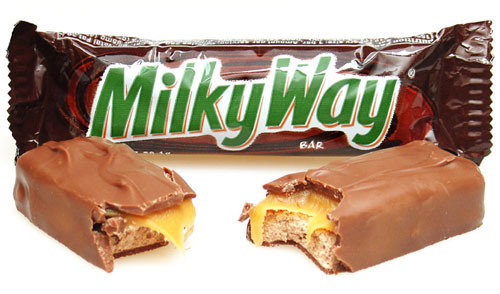 (/ sarc)
(/ sarc)
As I am almost 53 YoA, I'm not especially concerned. I believe that there are just a few more clear and present dangers ahead of this one.
Posted on 01/14/2014 5:41:54 AM PST by C19fan
The Milky Way’s black hole is about to gobble up its first dinner, and astronomers are hoping to have front row seats when it happens. A huge gas cloud, about three times the mass of Earth, is on course to collide with the supermassive black hole at the heart of our galaxy in March. Astronomers expect the gas cloud will swing so close to the black hole that it will heat up to the point where it produces spectacular X-rays.
(Excerpt) Read more at dailymail.co.uk ...
Ping!
That’s racist!
A bit alarming when you realize that every atom in our bodies is also in the grip of that monster 30,000 light-years away. The Sun orbits the Milky Way galaxy once every approximate 250 million years.
Why would the gas cloud “heat up” because of close proximity to the black hole?
that was juvenile and immature - why don’t you take that over to DUhmmieland?
 (/ sarc)
(/ sarc)
As I am almost 53 YoA, I'm not especially concerned. I believe that there are just a few more clear and present dangers ahead of this one.
All matter near the black hole would be massively accelerated, meaning that their energies would be astronomical. They would not exist as atoms or molecules in that state.
No snit, Einstein.
Who was it that said black holes are racist?
You were the one who claimed to be ‘alarmed’, sunshine!
so we can see a cloud 3 x earth mass at a distance of 27000 light years, and we can see it through the blocking influence of the galactic center albeit by utilizing xray and/or infrared telescopes....or do they see this with radio telescopes.
seems almost impossible as we struggle to find Jupiter size bodies at much closer distances....
also I have been schooled in the black hole phenomenon, that because of time dilation, we could watch something, from a safe distance, approach a black hole but it would never appear to enter it.
this article needs help....
OK here it is....a nice concise explanation of most of it
scroll down and watch the video
http://www.space.com/21994-giant-black-hole-devours-space-cloud.html
Actually, I think the black hole's gravity may start to influence the cloud's mass; i.e., pull it toward the black hole. That attraction heats up the cloud to where the compressed gasses emit x-rays.
I suppose that was too strong a word. How about simply “interesting to note”. In any case, it may not actually even be true. Although we and the Earth are in the grip of the Milky Way center of mass, there probably is very little if any influence from the black hole at the center of the galaxy.
It’s “First Dinner”? How’d it get so big if it hadn’t been eating for billions of years?
Typical Daily Mail screw up. The massive black hole at the center of the Milky Way gorged on all the stuff at the center when it first formed most likely forming a quasar. It ran out of "food" and thus been fasting waiting for this gas cloud to come into its gravitionial lair.
It turns out you don’t have to be a giant galaxy to have a super-massive black hole.
A Hubble Space Telescope study shows even small dwarf galaxies can have big black holes.
The discovery challenges currently held theories of galaxy formation and black hole growth.
Dwarf galaxies with massive black holes may be forerunners of galaxies like our own Milky Way.
The relationship between a galaxy and its black hole is as mystifying as any of those found among families on Earth.
Scientists don’t even know which came first — galaxies or their black holes, those regions of space so dense with matter that even photons of light fall prey to their gravitational jaws.
Scrambling the cosmic conundrum anew is a discovery of small dwarf galaxies with giant black holes, a finding that upends currently held theories of galaxy formation.
Previous studies showed that as a galaxy grows and evolves, its black hole seems to grow and evolve too, at least for the big clusters.
Using data from the Hubble Space Telescope, astronomers now find that some small galaxies in the distant universe have disproportionately sized black holes.
“They seem to be out of sync in some fundamental way,” astronomer Sandra Faber, with California’s Lick Observatory, told Discovery News. “These black holes are too massive given their star content at that time,” Faber said.
“They’ve grown up too fast. The holes have gotten ahead of the teen-age galaxies.”
Even more puzzling: the telltale bulge of stars associated with super-massive black holes in large galaxies is noticeably absent in these smaller siblings, suggesting there may be more than one way to grow a black hole.
The finding is based on studies of 28 dwarf galaxies huddled together some 10 billion light years from Earth. While black holes, by definition, cannot be seen, astronomers look at the radiation streaming from stars surrounding the black hole to figure out its size and features. ...”
http://news.discovery.com/space/galaxy-black-hole-110920.htm
We would see its "clock" ticking out time more and more slowly until it ultimately appears to have stopped, compared to our own stationary clock.

Disclaimer: Opinions posted on Free Republic are those of the individual posters and do not necessarily represent the opinion of Free Republic or its management. All materials posted herein are protected by copyright law and the exemption for fair use of copyrighted works.